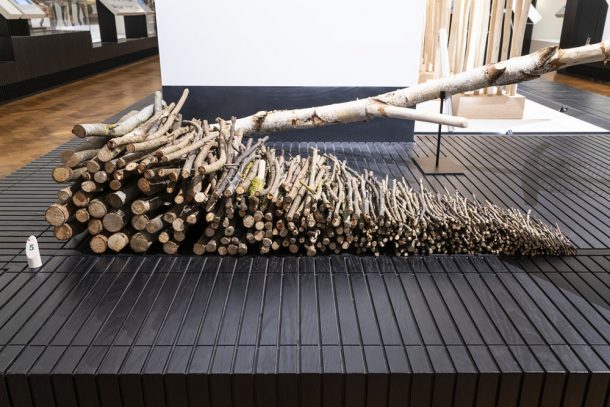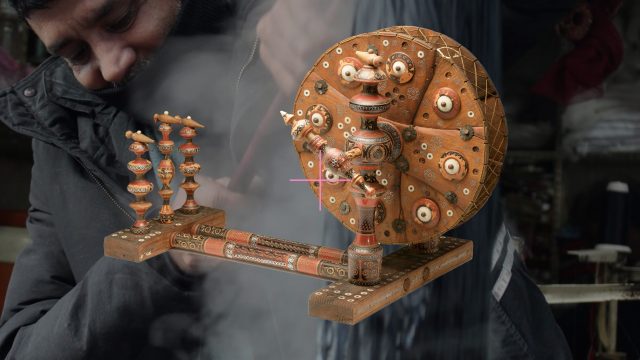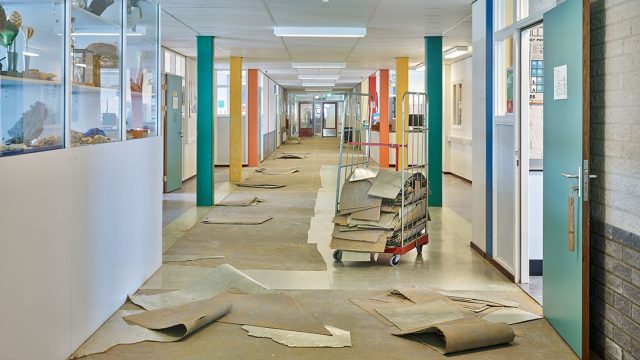
Through this project I explored the relationship between architecture and woodlands and what a circular relationship between the two might look like.
Matthew Rosier
Matthew Rosier (1990 –) is a London-based artist whose work combines technology with film and sound to create immersive public installations that explore the personal memories and public histories embedded within social, architectural and ecological contexts.
After graduating with an architecture degree from Oxford Brookes University, Matthew worked at London studio, Michaelis Boyd, before undertaking a one-year residency scholarship at the Fabrica research centre in Treviso, Italy. In 2014 he co-founded Chomko & Rosier, a studio that creates public artworks, installations and experiences for public spaces. Recent projects include Wood Rots Like We Do (2023), a video installation about the ancient shrines of Ise, Japan, entirely rebuilt of wood every 20 years, told through the stories of 15 participants, including politicians, priests, artists, foresters and activists; and City of Trees (2022), which brought Epping Forest into the City of London, in the form of life-size fire-lit portraits of its ancient trees projected onto a church tower, surrounded by an immersive soundscape recorded in the forest.


Matthew joined the Field Notes summer school to learn more about woodland management and how to work with locally sourced timber. He also wanted to connect with a group of practitioners with a shared belief in the importance of the relationship between communities, woodlands and materials.
Timber housing construction is rising in the UK and it is currently the second largest importer of timber in the world, yet it has just 13% woodland cover with the majority of this woodland inaccessible to the public. This dichotomy is something that is of particular interest to Rosier, and one that he researched and addressed throughout the summer school.

His project, Housing Harvest envisions all new timber housing initiatives having a reciprocal woodland, where the materials required for construction are regrown over the lifetime of the building. Building with sustainable timber is eco-efficient and has less environmental impact than traditional methods. Timber is renewable, recyclable, reusable and absorbs CO2. It is a material that can also have a positive impact on our mental wellbeing.

Matthew’s installation in The Dr Susan Weber Gallery of Furniture is intriguing and unexpected. The installation is composed of a bushel of 500 sticks from 20 tree species, a walking stick and plan drawing. The sticks represent a 0.2ha (45m × 45m) area of woodland planted using a continuous cover forestry model. This is approximately the area of woodland required to regrow the 35m3 of timber used in a typical apartment from Dalston Works, a development by Waugh Thistleton Architects of a high-density, low-carbon mixed-use scheme in east London and one of the world’s largest cross-laminated timber structures. Matthew collected the sticks by pruning trees in Paradise Wood, south Oxfordshire, which was planted by the Earth Trust in the 1990s as a research centre for hardwood trees. The sticks are supported by a wooden stake, plastic mesh and reusable cable ties from a deconstructed tree guard referencing the forestry management practices used. The birch walking stick represents the image of the historic figure collecting sticks for fuel. A rolled up 1:50 plan drawing from Dalston Works is slotted through a hole in the walking stick indicating the apartment to which the bushel of sticks relates.

By considering the relationship between architecture and woodlands and how it operates in a circular economy, Matthew aims to encourage housebuilders to use plant-based materials to construct better quality, carbon negative developments that have resident rights to woodland access, particularly in urban areas where there is less access to natural spaces. As he explains, ‘the aim of such a system would be to replenish currently imported timber with locally grown varieties, while creating a model for long-term regeneration and sustaining of woodlands which are accessible to communities.’ As the project also plays an important role in supporting indigenous flora and fauna, he also hopes to encourage private landowners to plant and manage woodlands.
Since the Field Notes summer school, Matthew has continued to pursue his research on this project.


